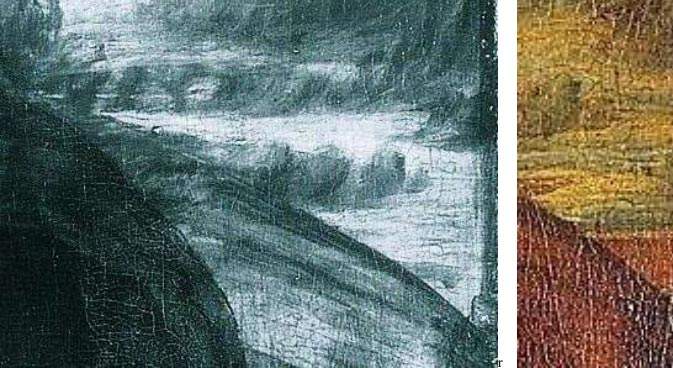In relation to the article Why it is completely useless to try to identify the landscape of the Mona Lisa of May 5, 2023, we publish the following request for correction (ex art. 8 Law 47/1948 as amended) that reaches us from Carla Glori.
I have read the article “Why it is completely useless to try to identify the landscape of the Mona Lisa” of May 5, in which - in dealing with the news about the Romito Bridge and the Mona Lisa Bridge - my research on the Hunchback Bridge is arbitrarily called into question and any research aimed at locating the background of that painting is denied scientific consistency. In view of the necessary brevity , I will merely mention the points in the article made the subject of clarification:: -i)...another mystery-solver (i.e., yours truly) would identify the Bobbio Bridge, due to the fact that in 1472 the river it crosses had a flood - II) :Leonardo did not paint real landscapes specifying "Art for Leonardo was a demonstration, as much as his scientific illustrations and diagrams"(quoted.by Martin J..Kemp)
(I ) Feeling a deep respect for “mystery” (especially in art), I stick to a logical answer: anyone can distinguish gestalt “72” under the collapsed arch both in the painting and in reflectography. The hypothesis that in that “gestalt” identifies the number 72 was made by me on the basis of historical and archival documents, as the great arch of the Hunchback Bridge collapsed in 1472: (its 5 arches were reduced to 4 and remained so until 1509.). No official denial has been received about the existence of that number, but, even if there were, it would not affect the scientific consistency of my investigation of the Gobbo bridge,.which in order to detect its structural compatibility with the painted bridge - also makes use of comparisons with technical drawings and lengthening projects (made between 1600 and the early 1800s by the technicians Olmerini, Maglio, Barattieri, Losio and others).
(II) Two “visible and verifiable data,” together with a reflectographic detail, refute the statement "Leonardo did not paint real landscapes.“ These are architectural details : a glimpse of a pitched roof and a finishing wall . About ”the sloping pitched structure that appears immediately behind the left side of the lady,“ Marani calls it ”gabled roof of an unfinished architectural construction, perhaps the same one to which the house with loggia under which the ’Mona Lisa’ stands belongs" ( Marani P.C , “Leonardo, La Gioconda,” Florence 2003, p.33). I identify that "pitched structure“ in the roof of the castle’s round turret. About the little finishing wall, it is actually a brown layer simulating a little wall, affixed by Leonardo in the lower left corner of the dama, (between the column and the aforementioned glimpse of the roof), in order to cover the arch of the bridge that I discovered in reflectography in 2012 (it is the only existing ”pentimento“ in the landscape). The arch in the underdrawing (i.e., a preparatory sketch) has the same position as the Hunchback bridge framed from the ”viewpoint" set by the research (:a window on the northeast facade of the castle).. The position of that arch - then hidden under a brown layer - validates the hypothesis that the bridge was painted by operating a dislocation of the Hunchback bridge . I conclude with a question: what are two architectural details and a design sketch doing in an imaginary or virtually recreated landscape?
Carla Glori
In the image, reflectographic detail. For the exclusive use of the author
 |
| Request for rectification under Article 8 Law 47/1948 |
Warning: the translation into English of the original Italian article was created using automatic tools. We undertake to review all articles, but we do not guarantee the total absence of inaccuracies in the translation due to the program. You can find the original by clicking on the ITA button. If you find any mistake,please contact us.